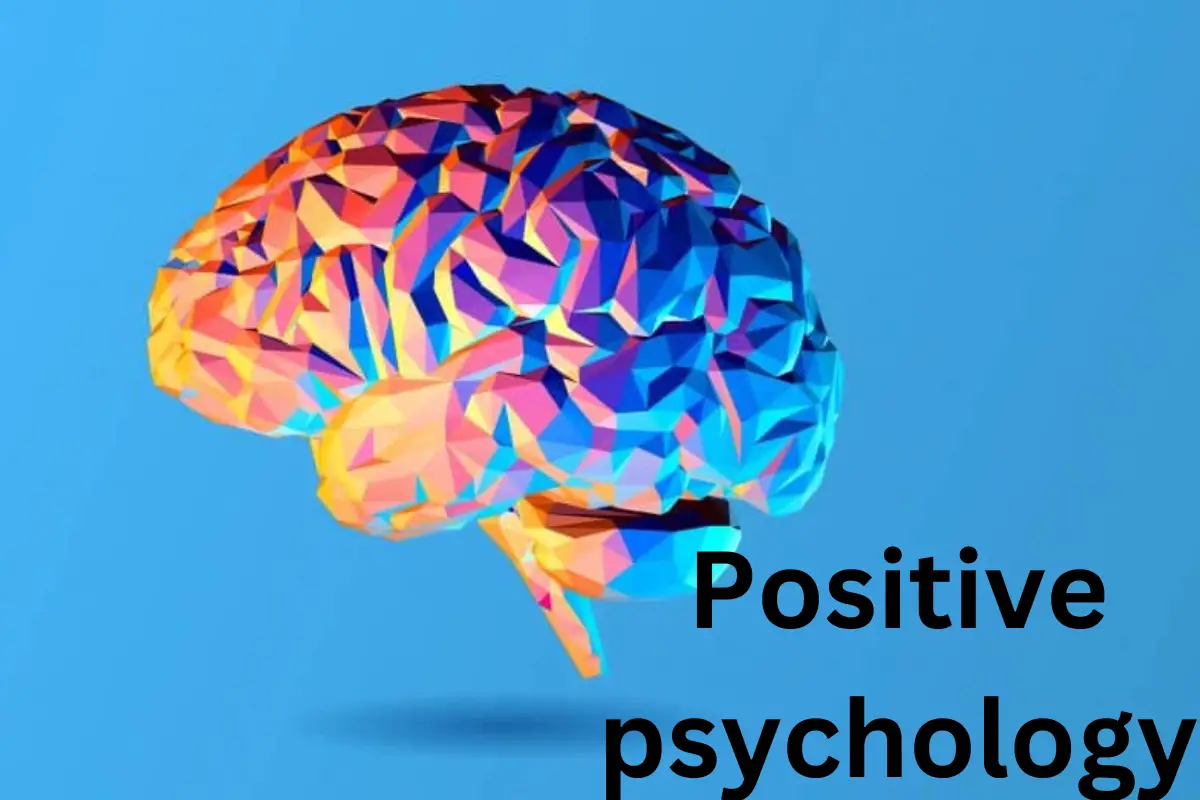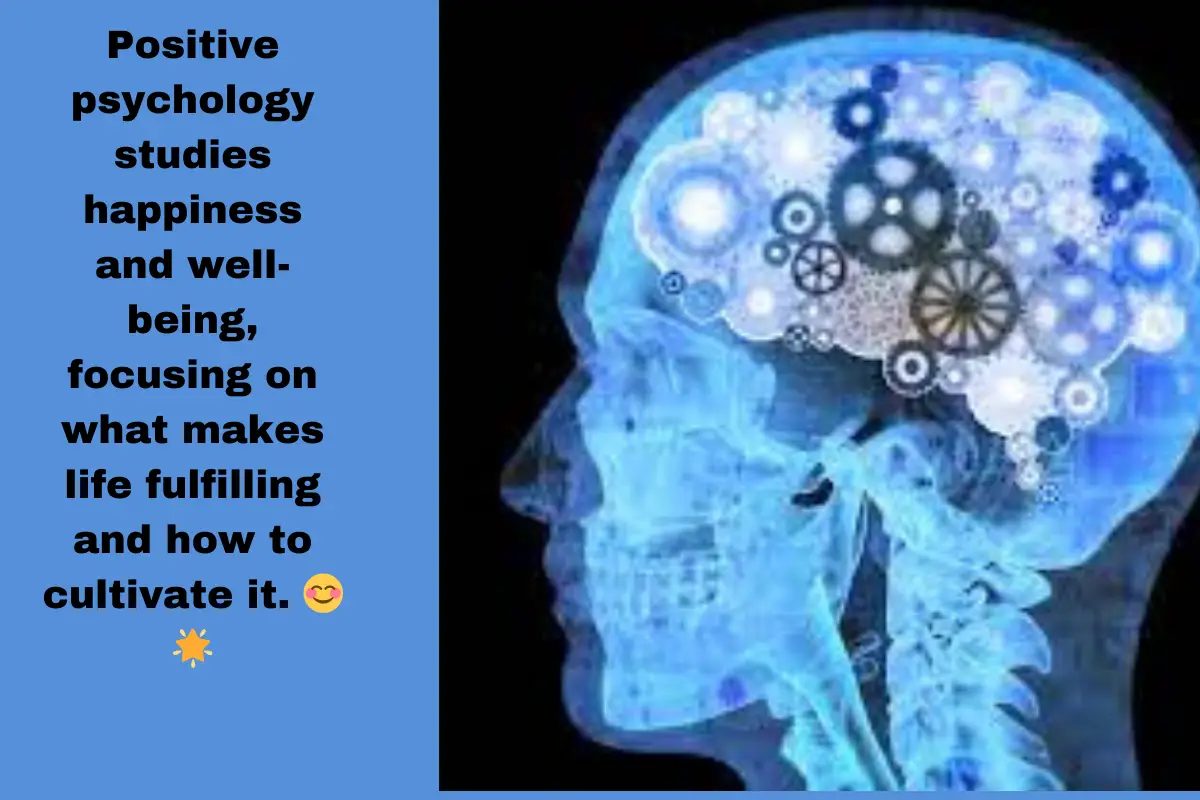Introduction:
Positive psychology has become a source of inspiration in a world where pursuing pleasure frequently takes front stage. In this area of psychology, the emphasis is on promoting happiness and human flourishing rather than eradicating misery. The fundamental tenets of positive psychology serve as a road map for living a more contented existence. We’ll set out on a trip to investigate and comprehend these pillars in this extensive blog post, as well as how they might improve our lives.
 What Is Positive Psychology?
What Is Positive Psychology?
Positive psychology is a formidable sub-discipline in the field of psychology that entails focusing on scientific investigation of happiness as well as people’s positive disposition to change and grow. Unlike the traditional psychology that is concerned with mental ailments and disorder, the positive psychology centres on learning about aspects of life that are positive. It is looking for something that makes them and what sustains mankind and human environment prosper thrive.
Positive psychology presupposes that people strive for a meaningful life filled with positive emotions in relation to significant events in their lives such as building a career, enhancing personal development, relationships, job satisfaction, and leisure activities. It has also developed new paradigms of assessing the human prosperity and unravelled the mysteries of health and well-being.
Founding Figures in Positive Psychology
Martin Seligman:
Martin Seligman is an important figure in the positive psychology who has been referred to as a father of this discipline. He introduced the PERMA model, which highlights five essential elements of well-being: PERT stands for positive emotions, engagement relationships meaning and accomplishments.
Mihaly Csikszentmihalyi:
Csikszentmihaly describes this as flow, which is a state of total immersion in some type of activity at such a level that there are great joys or happiness. In the cases of flow, people reach their highest happiness level.
Barbara Fredrickson:
Barbara’s broaden-and-build model states that positively emotions expand an individual’s perspective as well as construct resources. She says that positive feelings are gateways for creativity and an opportunity to develop more strength in our selves.
Section 1: Positive Psychology
Recognizing the enormous power of good emotions is where positive psychology begins. It’s about feeling deeply joyful, grateful, pleased, and in love rather than merely feeling nice. Positive feelings are the foundation of wellbeing; they don’t only happen occasionally. We can raise our level of happiness and life satisfaction by purposefully fostering these feelings.

Section 2: Personality Qualities
The second pillar consists of understanding and using our character strengths. We become who we are through our character traits of being brave, compassionate, wise, and strong. By identifying and using our ability we can build better self-esteem, become truer versions of ourselves and lead happier lives.
Section 3:Resilience
The third pillar is important because things in life aren’t always easy. It’s about thriving in the face of difficulties rather than just getting by. We can negotiate life’s ups and downs with more grace and ease if we develop resilience.
Section 4: Intent and Goals
What is our purpose? is explored in the fourth pillar, one of life’s most significant concerns. Positive Psychology argues that the search for meaning and purpose of life positively influences our overall wellness. It is about a fulfillment that goes beyond the mundane, and touching something greater.
Section 5: Good Interactions
The fifth pillar, the people around us, is essential to our happiness. Fostering wholesome, supportive, and happy connections is emphasised in positive psychology. These relationships are essential for our emotional health and can serve as a buffer during trying times.

Section 6: Achievements and Accomplishments
The sixth pillar focuses on objectives and accomplishments. The setting and fulfillment of meaningful goals have an impact on a person’s feeling of purpose, achievement, and value. This aspect motivates us to chase after our dreams whether giant or midget in size.
Section 7: Flow and Participation
Explored in the seventh pillar is the idea of “flow.” A condition of total immersion in a task where time seems to stand still is known as flow. Getting into flow increases happiness and life satisfaction. Positive psychology advises us to look for pursuits that let us feel this intense level of engagement.
Section 8: Attitude and Mindfulness
The eighth pillar includes mindfulness and a growth mentality. Practises of mindfulness make us present in the moment, which reduces stress and increases wellbeing. On the other hand, a growth mindset promotes resilience and the belief that we can keep learning and growing well into our old age.
Section 9: Appreciation
Gratitude is the ninth pillar that reminds us to appreciate and focus on positive things even when they are hard. Gratefulness can enhance our general quality of life and happiness.
Certainly, here are some key points about appreciation:
- Gratitude: Appreciation refers to an act of recognizing and thanking something or someone for a given thing.
- Positive Focus: Positive framing refers to positive aspects, characteristics or acts of a person situation or object.
- Enhances Relationships: The bond is strengthened when you say thank you because it demonstrates that the other person appreciates and respects.
- Increases Morale: Recognition can boost morale, motivation and general job satisfaction in a team or workplace.
- Promotes Positivity: It helps people have a positive attitude on life and is supportive of a happier, more meaningful living.
Section 10: Confidence
The last pillar exhorts us to have a positive view on life. Optimism isn’t denial of reality; rather, it’s confidence in our capacity to go beyond challenges and realise our objectives. Our mental and emotional health can be significantly impacted by having an optimistic attitude on life.
Certainly, here are some key points about confidence:
Self-confidence:
is the conviction in one’s own skills and abilities. Self-assured people are more likely to take on tasks, set high standards for themselves, and persevere in the face of difficulties.

Social Confidence:
Having social comfort is being at ease in social settings, being able to speak clearly, and establishing good relationships. It is necessary for socialising, making new friends, and establishing business ties.
Body Confidence:
This refers to one’s level of satisfaction with their outward look. For self-esteem and potential effects on mental health, body confidence is crucial.
Confidence in Decision-Making:
Decision-Making Confidence: Decision-making confidence entails faith in one’s discernment and the capacity to make decisions without undue uncertainty or worry about making mistakes.
Confidence in Communication:
Clear and assertive expression of ideas and opinions are necessary for effective communication.
Confidence in Learning:
For one to progress personally, one must have faith in their capacity to learn new things and pick up new abilities.
It is possible to grow and increase your confidence through time; it is not a set quality. Setting and attaining small goals, gaining experience, getting feedback, and engaging in self-compassion practises are all important components of developing confidence. Confidence can also be increased by positive self-talk and re-framing of unfavourable ideas.
In both personal and professional life, confidence is a crucial commodity since it enables people to follow their objectives, face challenges, and lead fulfilled lives.
Pillars of positive psychology vedio tutorial:
https://youtu.be/nbUyiEjhVPk?si=0kg9owl1oKooo10y
Conclusion
By providing a path to a more fulfilled existence, positive psychology has transformed our understanding of happiness and well-being. Positive emotions, character strengths, resilience, meaning and purpose, positive relationships, accomplishments, involvement, mindfulness, thankfulness, and optimism are some of its cornerstones. These tenets are not simply ideas; they also represent doable actions towards a better future.
We may create a life that is joyful, resilient, and filled with genuine fulfilment by embracing these pillars. Our focus can be changed from merely surviving to thriving, from merely existing to genuinely living, thanks to positive psychology. It’s a path that results in a life that is more purposeful, fulfilled, and profoundly rewarding. In light of this, keep in mind that these tenets of wisdom are the foundation for wellbeing as you begin your study of positive psychology.
FAQs
Who proposed 3 pillars of positive psychology?
Martin Seligman proposed the three pillars of positive psychology: Positive Emotions, Engagement, and Meaning.
Who are the pillars of psychology?
The “pillars” of psychology are usually people, who have contributed significantly in psychology. Sigmund Freud, B.F. Skinner, Carl Rogers, Pavlov, Piaget, Watson, James, Bandura are some of these pillars.
What are the 3 levels of positive psychology?
Positive psychology has been divided into three levels which include subjective, individual, and group level respectively. These levels examine happiness and well-being looking at it through diverse angles.
Why are the three pillars of positive psychology important?
Positive psychology has three pillars that are important as they emphasize on developing happiness, fulfillment, and purposefulness in a person’s life. They create an enabler of well-being and prosperity.
